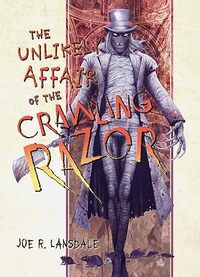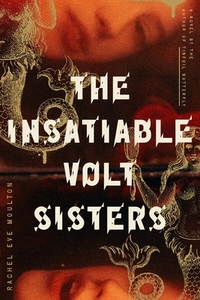American Mythology by Giano Cromley
 Monday, July 14, 2025 at 8:35AM
Monday, July 14, 2025 at 8:35AM 
Published by Doubleday on July 15, 2025
There have been many Bigfoot novels, primarily in the horror genre. Some are blended with comedy. At least a couple combine Bigfoot with zombies because what’s a horror novel without a zombie? I don’t know of any Bigfoot novels that are particularly noteworthy. Devolution by Max Brooks (better known for World War Z) is reportedly the best of them. Perhaps it will be supplanted by American Mythology, a novel that doesn’t inspire much fear but at least tells an entertaining story. And the story is zombie-free, which I mark as a plus.
A book with a green leather cover holds the story together. It first appears in a Montana trapping camp in the 1850s. One by one, the campers disappear. Their disappearances are recorded in the same notebook used to record the pelts of animals the men have captured. One of the men reports seeing a creature that is “large, hair-covered, walking upright like a man.”
The book is left behind, where it is discovered by miners in 1911 and again at a logging camp in the 1930s. In both cases, people record their own impressions in the book. In both cases, people in the camp begin to disappear.
The various camps were located near Ramsey Lake, named after a cartographer who insisted that the lake should be omitted from all maps of the area. One of the cartographer’s descendants came across the book while taking his son Jute to visit the lake. Jute’s father tells him that the lake is a “thin place,” where the boundary between dimensions can be crossed. Jute thinks he sees Bigfoot on that trip, then discovers that his dad has written I hear the voice. It’s beginning. Can’t fight it anymore. in the book. His dad became crankier and disappeared when Jute was sixteen.
Jute is now an adult. Jute and his best friend, Vergil Barnes, are the only members of the Basic Bigfoot Society. They differ in their belief about the nature of Bigfoot. Vergil is an aper who subscribed to the relict hominoid theory (Bigfoot evolved as something between an ape and human) while Jute belongs to the Woo camp (Bigfoot is an interdimensional being). They have occasionally undertaken local expeditions in search of Bigfoot, but mostly they conduct meetings in the local bar. Vergil has an uncurable disease that will soon kill him, although he has concealed that truth from Jute.
Dr. Marcus Bernard is a professor of evolutionary biology who has earned modest fame by arguing for the existence of Bigfoot. For reasons involving a reduced need for extra income and a desire to retore his academic integrity, he renounces his former view that Bigfoot is an actual creature. His conversion to reality-based thinking doesn’t sit well when he announces it at a Bigfoot conference. As he explains, “Bigfoot people don’t like being confronted with reality.”
In a scene marked by remarkable and unlikely coincidence, Bernard stumbles upon the bar where Vergil and Jute are meeting while he’s searching for a hospital to treat his bleeding foot. For reasons of his own, Bernard agrees to join a new expedition in search of Jute’s dimly recalled Ramsey Lake as Bigfoot’s possible home. The location is marked on a hand-drawn map that Jute finds in his mailbox. Who drew and delivered the map? That question is part of the mystery.
Vicky Xu, a film student, wants to make a documentary as a college project. She worms her way into the expedition after finding the leatherbound book in Jute’s collection of Bigfoot evidence. Vergil’s daughter Rye rounds out the group.
The main plot concerns the expedition, peppered with disclosures about Vergil’s illness that manage not to be melodramatic. Giano Cromley draws out the suspense for so long that a reader might wonder if the Bigfoot mystery will ever be solved. The first four-fifths tease the reader with improbable occurrences — a character sees an unusually large man with antlers growing from his head; a character hears her dead mother calling to her — in addition to various animalistic howls and roars, campsite disturbances, a watchful crow, little stick men left for the characters to find, and other horror movie staples.
When the reveal finally arrives — well, I won’t spoil it. Like many quest stories, the reader will realize that it's more about the journey than the destination. Maybe there’s a Bigfoot, maybe there’s not. Cromley comes up with something that approaches a happy ending, again under circumstances so improbable that my willingness to suspend disbelief was tested, but the characters probably deserve a happy ending, so who am I to begrudge them one?
On a more positive note, the characters are all reasonably likable and the story moves quickly. Cromley is a capable storyteller. American Mythology makes good points about the ease with which people latch onto fanciful notions (mythical creatures in this case, but conspiracy theories are another example) when reason and evidence might lead them in a more rational direction. I appreciated the recognition that academics sometimes sacrifice their honor for the dollars that come from being a contrarian pundit. Still, the story’s purpose is to entertain rather than to lecture, and it achieves that goal by asking readers to set aside reason for the sake of being entertained by the possibility that myths might be real after all.
RECOMMENDED



